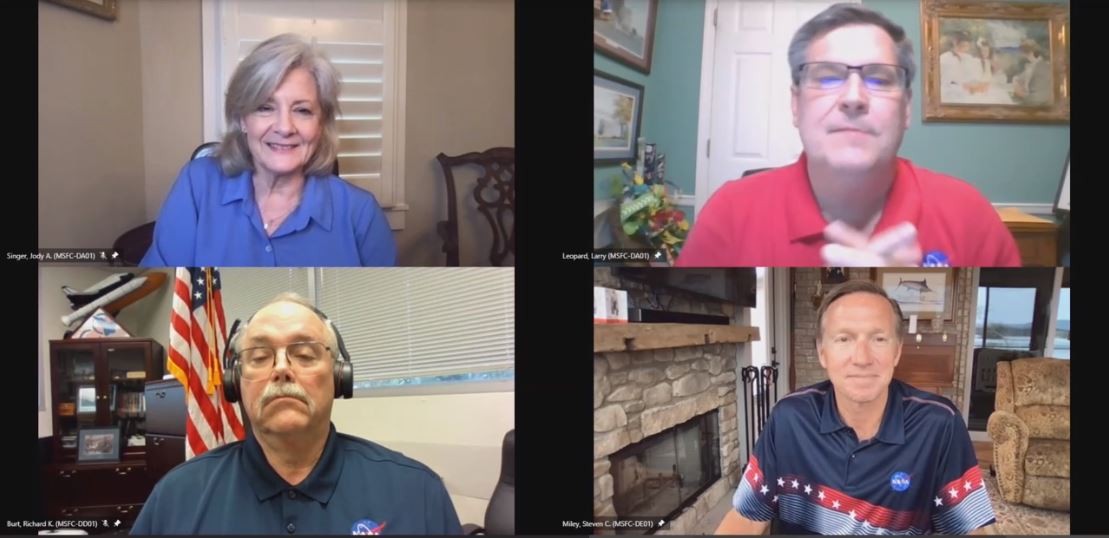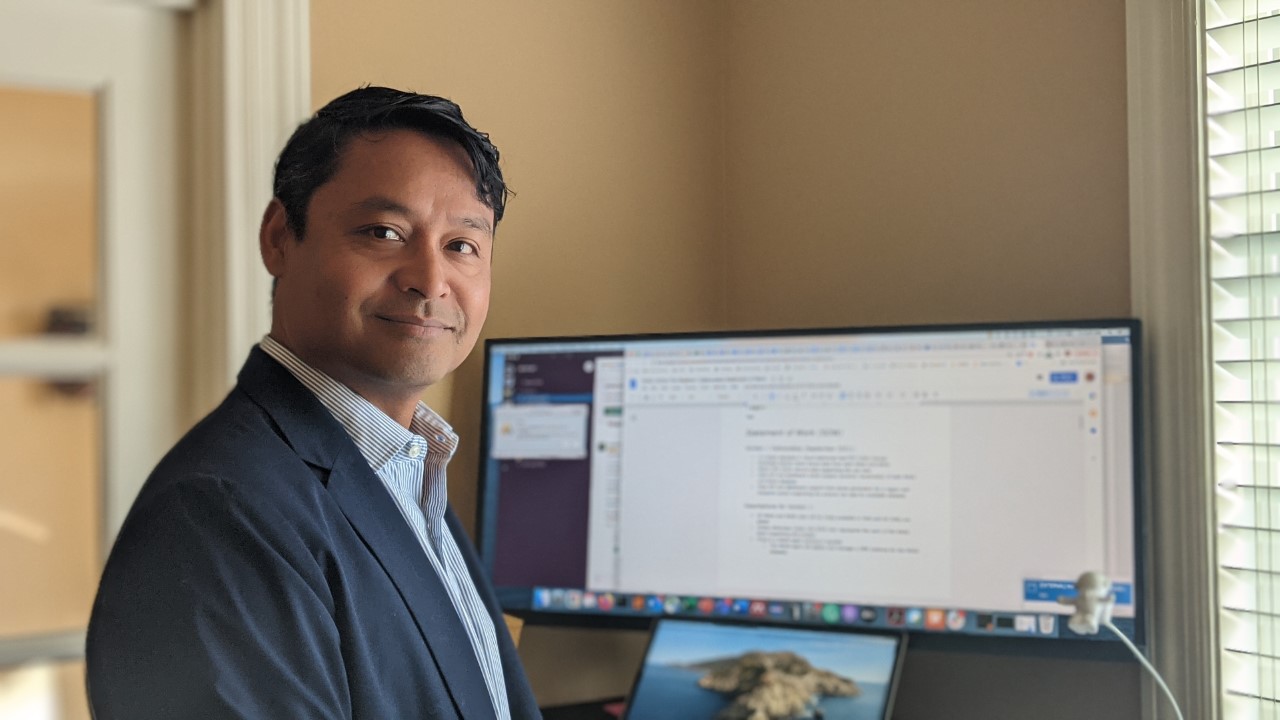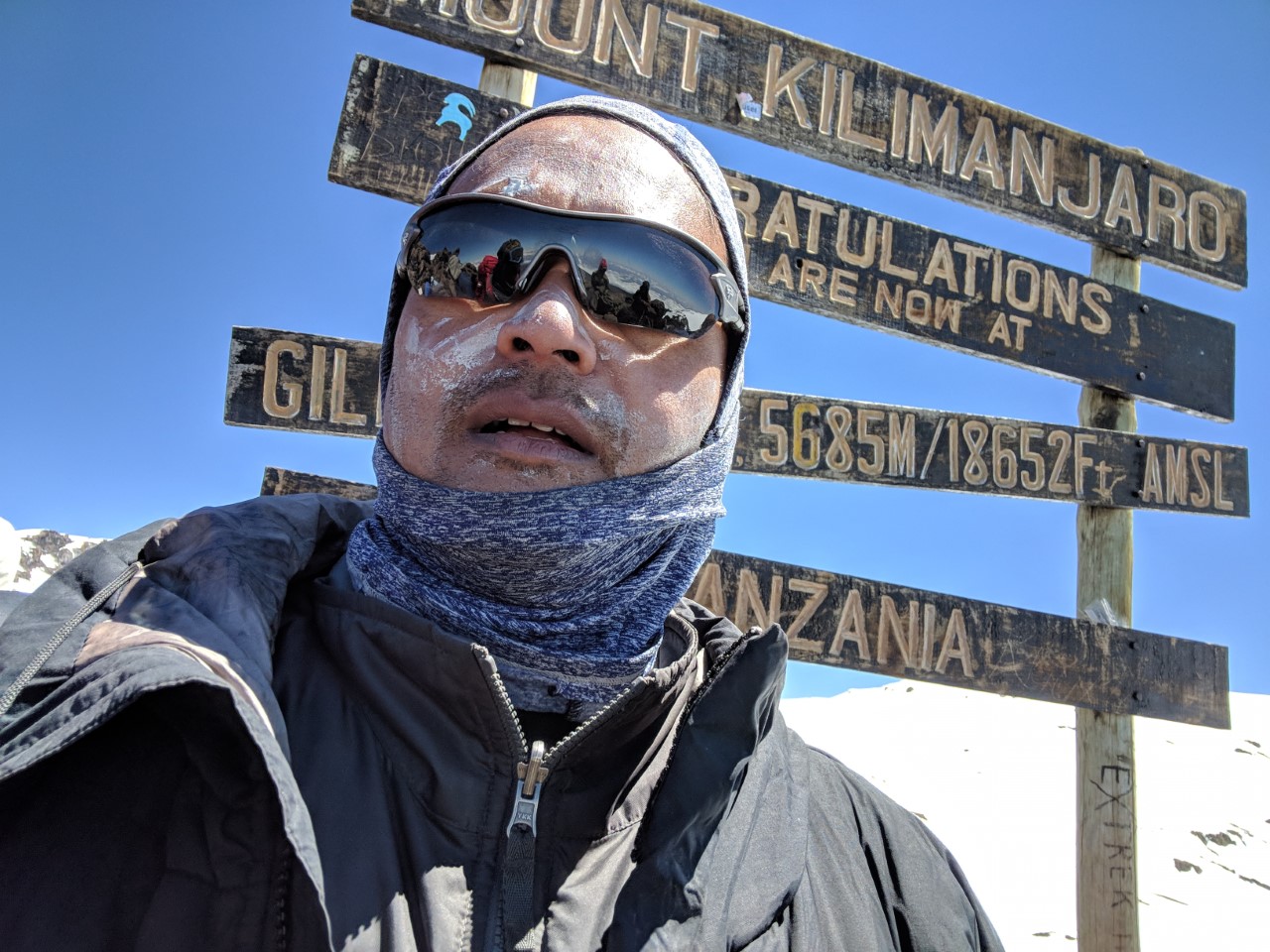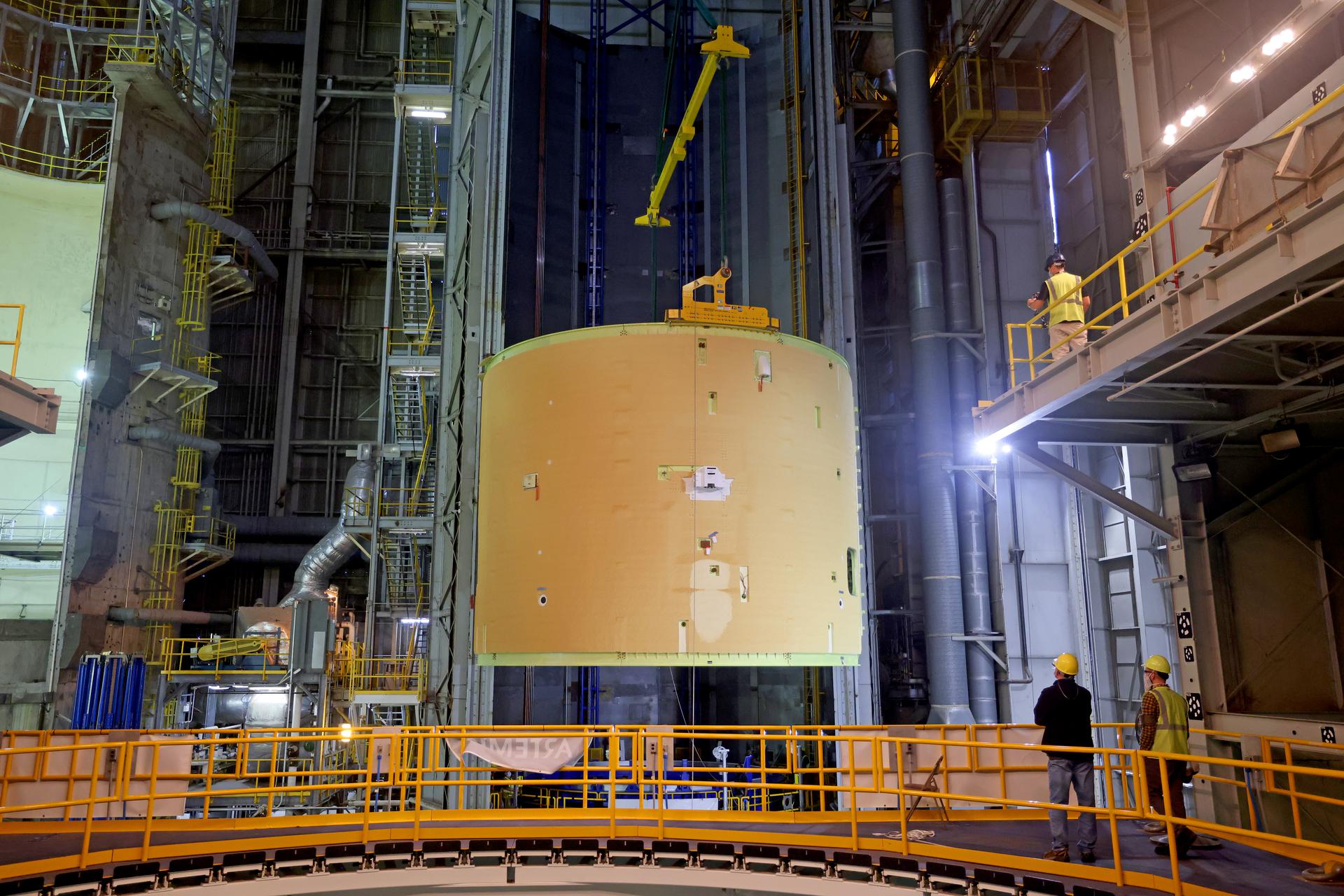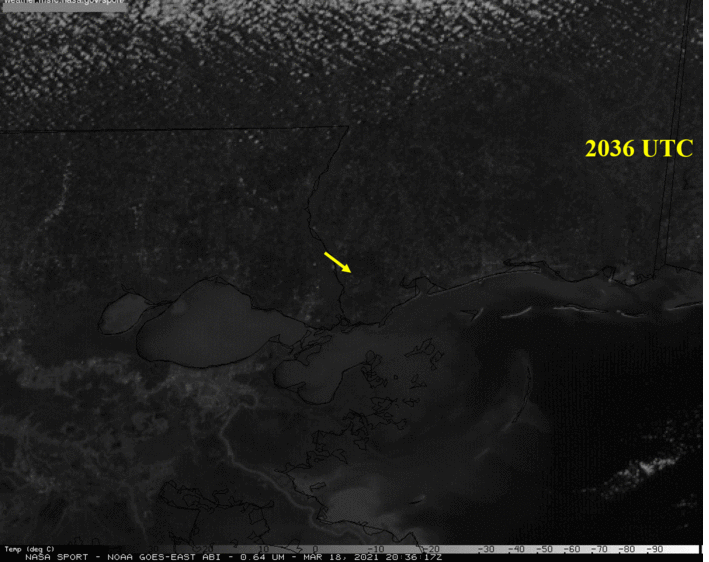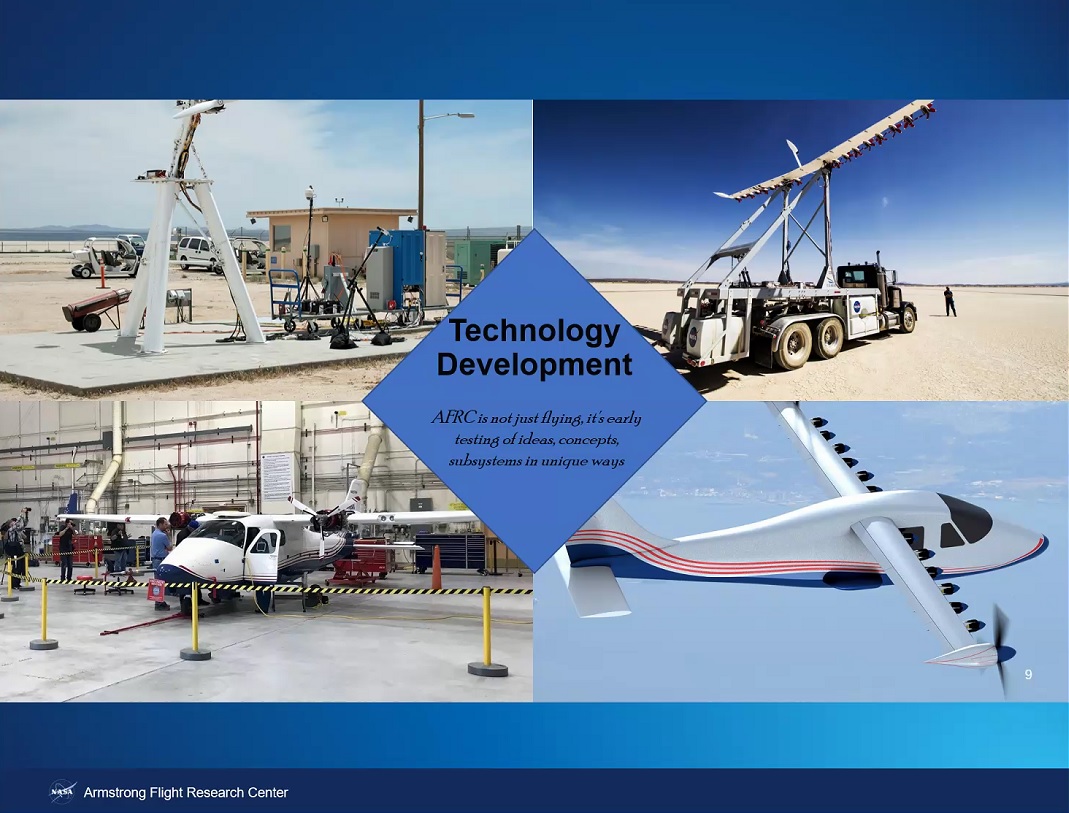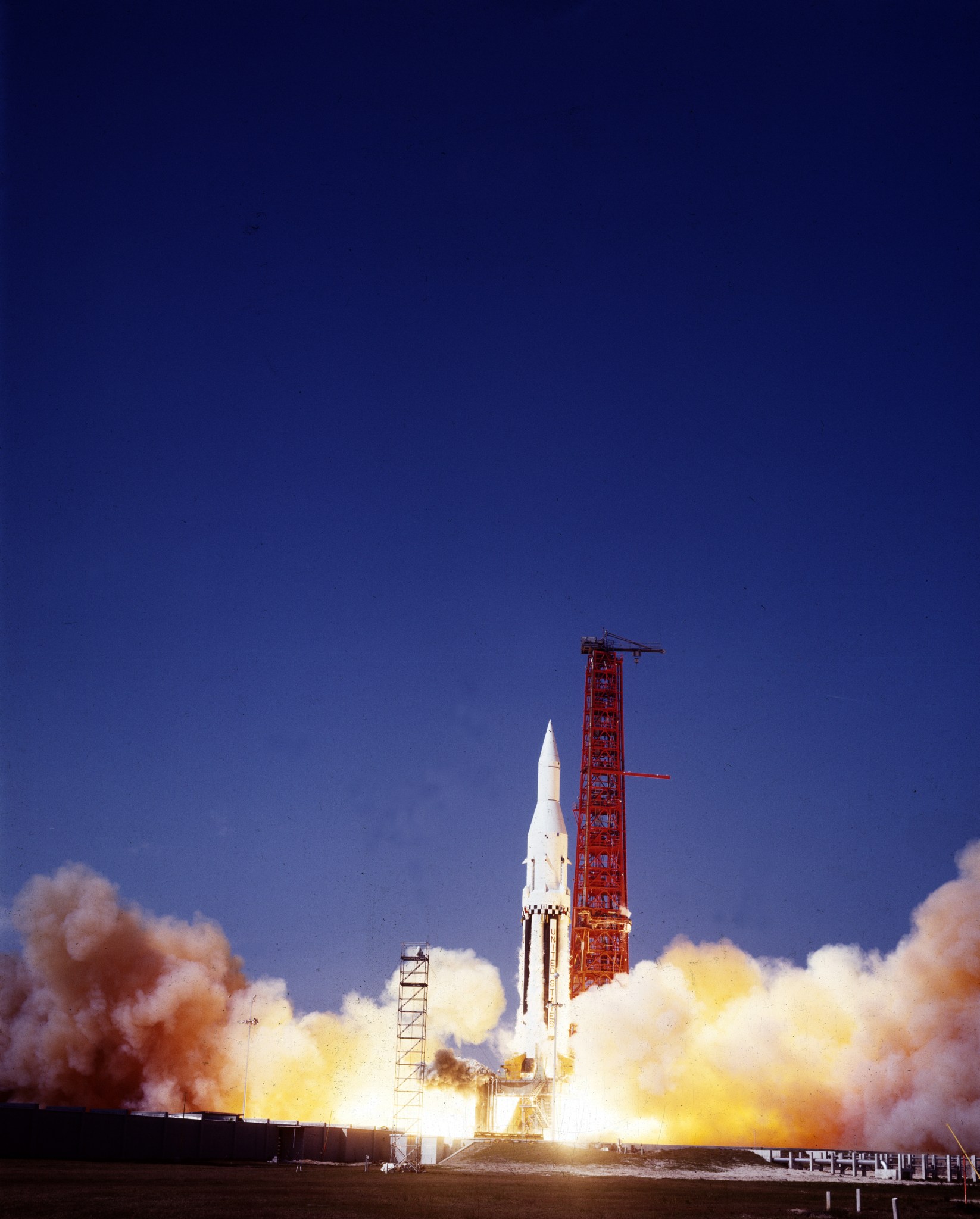Marshall Executives Update Team in Live Town Hall
By Taylor Goodwin
Executive leaders at NASA’s Marshall Space Flight Center updated the workforce in a live virtual town hall March 23.
Marshall Director Jody Singer, Deputy Director Rick Burt, Associate Director Steve Miley, and Associate Director, Technical, Larry Leopard discussed mission milestones, return to on-site work, personnel, and vaccinations. They also answered questions submitted by team members.
Singer highlighted the center’s latest feats, including the Payload Operations and Integration Center’s 20 successful years of supporting science aboard the International Space Station. “This team knocks it out 24/7, 365 days a year,” she said. “We work hard with the astronauts living and working in space to advance science and technology, but it’s because of this team on the ground that they can accomplish these missions.”
Also working tirelessly are the teams prepping for upcoming science missions, such as the Imaging X-ray Polarimetry Explorer. The observatory is now fully integrated, with testing underway in preparation for launch in November. “All these milestones are a testament to the experience, commitment, and expertise of this world-class team who will uncover what we have yet to see,” Singer said.
The Space Launch System completed its Green Run test series with a successful full-duration hot fire of the Artemis I core stage March 18 at NASA’s Stennis Space Center. All four RS-25 engines ignited for eight minutes and produced 1.6 million pounds of thrust, as they will to launch the Artemis I mission to the Moon. During the test, the engines consumed more than 700,000 gallons of liquid oxygen and liquid hydrogen propellant. “We test what we fly and fly what we test,” Singer said. “These tests provide a wealth of data to help us ensure that every SLS flight is successful.” Next, the core stage will join all other Artemis I flight hardware at NASA’s Kennedy Space Center.
Hardware production for Artemis II, III, and IV is also underway. “There are a lot of first-time challenges that we’ve faced this year, but the hardware is coming together much faster and more efficiently than ever,” Singer said. All of the elements for the Block-1 SLS vehicle for Artemis II are complete. This mission will be the first crewed lunar mission that the agency has executed since 1972.
Miley provided updates to the center’s COVID-19 response. Marshall currently remains in Stage 3 of NASA’s Return to On-site Work Framework, with between 1,400-1,600 individuals on-site for mission-critical work. In the Marshall commuting area, the number of coronavirus cases, the amount of spread, the rate of transmission, and case growth have all decreased significantly, according to Miley. Vaccinations are becoming more widely available to the workforce. “When we do move to Stage 2,” Miley said, “we’ll be able to conduct more on-site work. However, all work that can be conducted off-site will continue to be done in a telework environment.” When the center transitions to Stage 2, the workforce will be notified in ample time to adjust their working arrangements, if applicable.
“It’s been a whole year since Marshall has moved to mandatory telework in response to COVID-19,” Singer said. “I am just amazed at each of you and your ability to work through adversity.”
Though Alabama’s mask ordinance will be lifted April 9, the federal mask mandate will remain in effect, meaning masks will still be required on-site at both Marshall and NASA’s Michoud Assembly Facility. Marshall and Michoud will continue to adhere to all agency safety guidance as well.
Miley encouraged the workforce to monitor COVID-19 vaccine availability in their respective areas. An agreement between NASA and Kroger provided for a small subset of mission-critical Marshall employees to receive the Pfizer vaccine March 25. That included the space station payload support staff and Protective Services. Though not required, interested and qualified employees were able to make appointments to receive the vaccine. “There may be additional opportunities in the future,” Miley added, “for Marshall to provide more vaccines to broader tiers of employees.”
NASA will continue to offer up to 20 hours of excused leave per pay period to employees for caregiving needs through September 14. Excused leave – up to eight hours – may also be granted to receive the vaccine. Team members should continue to keep their supervisors informed regarding leave taken.
“We don’t have all the answers,” Singer said, “but our top goal is to keep you safe because you are the future of Marshall, of NASA, and of exploration and science. Keeping you healthy and keeping you informed is what keeps us moving forward.”
Goodwin, a Media Fusion employee, supports Marshall’s Office of Strategic Analysis & Communications.
Take 5 with Rahul Ramachandran
By Daniel Boyette
Engineering always seemed like a natural path for Dr. Rahul Ramachandran. From a child growing up in Delhi, India, his dream of becoming an aeronautical engineer and jet plane designer led to a bachelor’s degree in mechanical engineering.
But, after moving to the U.S. in 1991 to pursue a master’s degree in industrial engineering, his passion waned. Ramachandran landed into the meteorology graduate program at the South Dakota School of Mines and Technology in Rapid City instead, the first of many steps that would lead to his current role as manager of NASA’s Inter-Agency Implementation and Advanced Concepts Team, or IMPACT, at the agency’s Marshall Space Flight Center. IMPACT, part of NASA’s Earth Science Data System Program, fosters innovation, builds strategic connections, and enables early technology adoption to empower communities to effectively utilize the ever-increasing amounts of Earth observation data to improve research, applications, and decision making.
In addition to his engineering and meteorology degrees, Ramachandran holds a master’s and doctorate in atmospheric science, and a master’s in computer science, all from the University of Alabama in Huntsville. He received the Presidential Early Career Award for Scientists and Engineers in 2009. Ramachandran loves adventure travel, especially hiking, and has climbed Mount Kilimanjaro in Tanzania and Mount Fuji in Japan. He also dabbles in creating digital art using artificial intelligence algorithms – a method he calls neural art.
Question: How do you encourage teamwork, collaboration, and integration, especially in this unprecedented telework environment?
Ramachandran: Our project management approach of using agile processes has helped in the telework environment. We tag up every two weeks to review project progress as a team and, more importantly, share kudos amongst the team on completing both a significant milestone and even small tasks where a team member has gone the extra mile. Everyone on the team is encouraged to participate in the review and celebrate successes, no matter how small.
Question: How are you managing your personal and your team’s work-life balance, especially now, a year into the COVID-19 pandemic?
Ramachandran: Managing a work-life balance has been very challenging. The line between work and home has blurred, and people are working longer hours. I encourage people to take breaks. We regularly schedule virtual social hours during lunchtime or Friday afternoons to socialize and check in with each other. While these virtual social gatherings are not the same as the in-person interactions that we all desire, they are still enjoyable.
Question: How does your team honor and demonstrate NASA’s commitment to creating a diverse and inclusive environment where team members are valued for their unique contributions?
Ramachandran: IMPACT strives to build a culture committed to collaborative, innovative, and agile solutions. I am very proud that our team is very diverse. We have people with different cultural, racial, and educational backgrounds with varying types of work expertise. We value diversity because it helps us look for solutions with different perspectives. We promote regular and ad hoc knowledge shares where team members share some technical knowledge or personal information, such as a favorite sitcom episode. These knowledge shares are very popular and enable everyone on our team to learn something new and find commonalities in our diversity.
Question: What key partnerships are your team pursuing to help NASA build and develop a sustainable presence on the Moon? Help push the boundaries of science, technology, and/or human exploration?
Ramachandran: IMPACT’s mission is to expand open science through innovation, partnerships, and technology. We have several projects where we partner with other federal agencies and international space agencies such as the European Space Agency and the Japanese Aerospace Exploration Agency. We also actively collaborate with the private sector in the area of cloud computing, data science, and artificial intelligence.
Question: Why do you think your team is successful at staying mission-focused?
Ramachandran: Our vision statement, “Open Science,” drives us. We define open science as a collaborative culture enabled by technology that empowers the open sharing of data, information, and knowledge within the scientific community and the wider public to accelerate scientific research and understanding. Everything we do strives to: expand the accessibility to science by encouraging science as a way of thinking and enabling broader comprehension of scientific research results; enabling access to science as a body of knowledge; developing new technological solutions to make scientific research and knowledge dissemination efficient; and improve our ability to understand the impact of scientific research.
Boyette, an LSINC employee and Marshall Star editor, supports Marshall’s Office of Strategic Analysis & Communications.
Recent Take 5s
Susan Whitfield, Marshall’s director of human resources
Jason Detko, director of Marshall’s Office of Procurement
Rae Ann Meyer, deputy manager of Marshall’s Science and Technology Office
Loucious Hires, director of Marshall’s Office of Diversity and Equal Opportunity.
Deborah Crane, Commercial Crew Program launch vehicle chief engineer
Technicians Weld Rocket Stage Adapter for First Crewed Artemis Flight
Technicians at NASA’s Marshall Space Flight Center complete the weld to join the two major parts of the launch vehicle stage adapter for NASA’s Space Launch System. The adapter, a cone-shaped piece of hardware that connects the rocket’s upper and lower stages, will fly on Artemis II, the first crewed mission of NASA’s Artemis program and the second flight of the SLS rocket. Technicians completed the weld that joined the upper and lower cones of the adapter into one structure by using advanced robotic tooling and an innovative process called friction stir welding. The next step is installation of the pneumatically actuated frangible joint, which sits on top of the adapter and helps separate the core stage and adapter from the rocket’s Interim Cryogenic Propulsion Stage during flight. (NASA)
NASA Moves SLS Intertank for Artemis II Forward Join
Technicians at NASA’s Michoud Assembly Facility move the intertank for NASA’s Space Launch System to the vertical assembly area March 19 to begin assembly of the forward, or upper part, of the rocket’s core stage for Artemis II. To form the massive, 212-foot-tall core stage, five major structures are joined together: the forward skirt, liquid oxygen tank, intertank, liquid hydrogen tank, and engine section. NASA and Boeing, the core stage prime contractor, are preparing to connect the top three structures together to create the forward assembly of the core stage. The process of stacking and assembling the forward skirt, liquid oxygen tank, and intertank is called the forward join. It is the first major vertical integration of hardware for the Artemis II core stage. The intertank is first installed in a vertical stacking cell at Michoud. Later, teams will move the liquid oxygen tank and forward skirt to the same area to stack the structures together. (NASA)
NOAA Weather Satellite ‘Sees’ Green Run from Space
The National Oceanic and Atmospheric Administration GOES-16, or GOES-East, advanced weather satellite detects the plume from the Green Run hot fire test for the core stage of NASA’s Space Launch System rocket March 18 at NASA’s Stennis Space Center. The plume, mostly composed of water, is seen in satellite imagery commonly used for studying Earth’s weather. Visit here to learn more from NASA’s Short-term Prediction Research and Transition Center at the agency’s Marshall Space Flight Center. (NASA/SPoRT)
Women’s History Month: Celebrating the ‘First Ladies’ of Marshall
As NASA and the nation prepare the way for the first woman to set boots on the Moon through the Artemis program, the agency’s Marshall Space Flight Center is celebrating Women’s History Month by highlighting the work and contributions of its female team members. That includes a group who have achieved significant “firsts” in Marshall’s history. Led by the center’s first female director, these “first ladies” of Marshall are guiding and supporting missions through engineering, science, communications, legal counsel, and other roles.
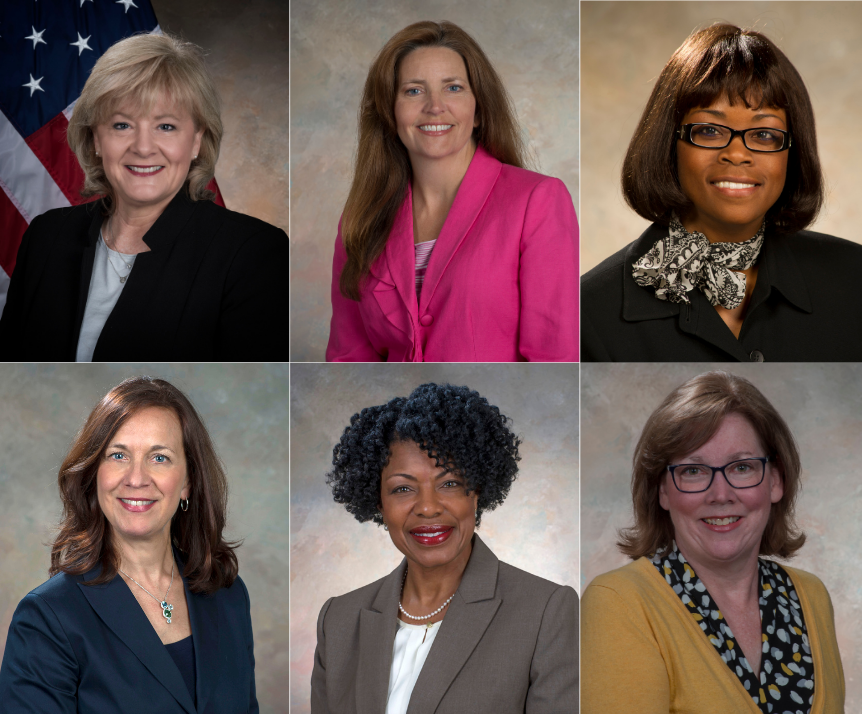
Jody Singer
Title: Director
My role at NASA: Managing Marshall and Michoud Assembly Facility. Marshall is one of NASA’s largest field installations, with nearly 6,000 on- and near-site civil service and contractor employees, with an annual budget of approximately $3.6 billion.
Hometown: Hartselle, Alabama
Years at NASA: 36
Why I do what I do: Being the Marshall director is an honor of a lifetime. I do what I do because I love what our agency, and the people who make it possible, do. It’s not hard to dedicate your life to something that betters humankind with every triumph, supports jobs nationwide, and inspires the next generation of explorers and scientists. Every day I am inspired by the talented workforce that continues to deliver on our missions despite technical challenges, pandemic impacts, and natural disasters. I work hard for the people of Marshall, who are the best part of what we do. We are going forward together with our many partners in industry, academia, and this community. I always say, “If you want to go fast, go alone; if you want to go far, let’s go together.”
What is the next “first” by a woman you hope to see at NASA? I am looking forward to seeing the first woman, along with the next man, set foot on the surface of the Moon. I can’t wait to look up at the Moon and realize a woman is there, for the first time. This is just one reason the Artemis program is inspiring, and why I’m working so hard to let people know what we are doing at Marshall to support it.
Women who have inspired or influenced me: My mother and sister inspired and encouraged me to chase my dreams and to pursue a STEM field.
I have looked up to so many other strong women who led the way and took the time to mentor me and share with me their lessons learned, which included being a resilient and caring leader who could be comfortable in my own skin. They also challenged me to get out of my comfort zone and not be afraid of failure. One of those is Carolyn Griner, who served as the Marshall deputy director and for a time as acting director. Even after her retirement in 2002, she coached me on how to bring a team with you as you have to make tough and sometimes unpopular decisions. That lesson sticks with me even today. I want to thank the women and men who have helped me along the way.
I am also inspired by the talent and determination of young women today. I hope one day that they too will have a career in human exploration. I challenge them to be resilient, work hard, and accept challenges throughout their professional life. I would also tell them to never lose their enthusiasm, and always be ready to learn even decades into their careers!
Lisa Watson-Morgan
Title: Human Landing System Program manager
My role at NASA: I am responsible for the cost, schedule, and technical requirements for our return to the Moon, which is incredibly exciting. We are in the process of selecting our contractor that will become our partner, or partners, to help with the journey back to the lunar surface. When we return, we are going to a new location – the South Pole – instead of the equatorial landings made during the Apollo era. In addition, we will be sending the first woman and the next man, which is another exciting element.
Hometown: Huntsville, Alabama
Years at NASA: 31
Why I do what I do: I am driven by the complex, one-of-a-kind nature of our work. I like challenges. I like working as a team to complete a common goal. I like listening to the team’s ideas, the challenges, risks, technical designs, ensuring safety, etc. I learn something every day.
What is the next “first” by a woman you hope to see at NASA? Land and walk on the Moon, of course.
Women who have inspired or influenced me: Ann McNair, Teresa Vanhooser, Jody Singer, Lesa Rowe, Kathy Lueders, Tereasa Washington, Caroline Griner, and Dr. Jan Davis.
Audrey Robinson
Title: Chief counsel
My role at NASA: I provide functional leadership advice, counsel, and legal representation on a wide variety of legal issues related to all aspects of NASA activities.
Hometown: Montgomery, Alabama
Years at NASA: 35
Why I do what I do: My desire to make a difference.
What is the next “first” by a woman you hope to see at NASA? I’d like to see the first woman become NASA administrator.
Women who have inspired or influenced me: First and foremost, my mother, Ivory Jackson, who is the strongest woman I know. She has endured and overcome unbelievable obstacles and tragedies in her life while remaining steadfast, kind, and faithful to her family and community. She is our rock.
My grandmothers, Willie Mae Myrick and Mary Robinson, were also incredible women who poured their strength, faith, and resiliency into me. I come from a long line of strong women who loved their families fiercely and worked hard to ensure that our needs were met. They were skilled at making a way out of no way.
A few teachers along the way who believed in me, like my first-grade teacher Nannie Joiner and my 10th-grade teacher Shirley McClain.
Some stellar NASA former supervisors like Susan M. Smith, retired chief counsel at Marshall, and Brenda Manuel, retired NASA associate administrator in the Office of Diversity & Equal Opportunity. And NASA colleagues who served as friends and mentors, including Tereasa Washington, Ann McNair, Sumara Thompson King, Pam Hanes, and Monica Ceruti.
So many women have inspired me and influenced my life and career, including my close friends, the young women I mentor, the women I work alongside, and so many others who are engaged in the battle to realize their goals and to pave the way for others to reach their goals as well.
Mary Beth Koelbl
Title: Director, Engineering Directorate
My role at NASA: I provide leadership for the Engineering Directorate to deliver cost-effective and quality technical products and services. I also provide strategic direction to ensure our resources and investments are aligned with the agency’s goals and objectives, and to develop the workforce for the future.
Hometown: Iowa City, Iowa
Years at NASA: 35 in June
Why I do what I do: The people. There is such a great group of people at Marshall. I can’t wait until we are back at work in person!
What is the next “first” by a woman you hope to see at NASA? Boots on the Moon, of course! Followed by some great scientific discovery while they’re up there.
Women who have inspired/influenced my life and career: My mother, of course, is my greatest inspiration. She was the reason I wanted a career in the first place. She has been my biggest supporter and I work every day not to disappoint her. My sister has also been quite influential. She is a great listener, offers the best advice, and remains my best friend.
Shelia Nash-Stevenson
Title: Science Projects manager
My role at NASA: It is my responsibility to work with the team, normally consisting of Marshall scientists and engineers, U.S. industry and academic partners, and international partners, to develop the plan for project success and to assure that plan is properly implemented. I make sure they have what they need to accomplish their tasks.
Hometown: Hillsboro, Alabama
Years at NASA: 32
Why I do what I do: I enjoy working with a team whose common goal is mission success, and who will do everything they can to make it happen, even if it means helping a teammate outside their area of expertise. The team realizes that each member has to succeed for the mission to be successful.
What is the next “first” by a woman you hope to see at NASA? I would like to see the first woman become NASA administrator.
Women who have inspired/influenced my life and career: My mom taught me to never let anything get the best of me, and never to give up.
Also, female high school teachers who expected me to do well, and I didn’t want to let them down. One did not feel I belonged in the Honor Society until I provided paperwork that proved I did. This taught me that not everyone will think I belong – it’s up to me to prove that I do.
June Malone
Title: Communications director
My role at NASA: I lead a team of excellent communication professionals and oversee all internal and external communications efforts for the center, using all tools imaginable. We tell our story to the world, sometimes one person at a time, and at other times, to millions at once.
Hometown: Hoyleton, Illinois
Years at NASA: Almost 30
Why I do what I do: Because of the excellent people on my team and because of NASA’s unique mission. We must never lose sight of how others view NASA.
What is the next “first” by a woman you hope to see at NASA? That women in their roles are not seen as a barrier breaker – that it’s a norm. That women are seen as strong and capable people in the workforce. I am excited to see the first woman on the Moon, and hope to see human explorers on Mars in my lifetime.
Women who have inspired or influenced me: My grandmothers. They were simple, kind, thoughtful, and patient. They were not formally educated, but were smart and wise women who deeply cared for others. Likewise, my daughter – she’s never seen any boundaries that she didn’t think she could cross.
Visit here to watch video interviews with the highlighted team members.
Jen Welter, First Female NFL Coach, Delivers Women’s History Month Keynote
Dr. Jen Welter, a former professional football player and coach, delivers the keynote address for the virtual Women’s History Month program at NASA’s Marshall Space Flight Center on March 23. Her talk, entitled “Play Big! Lessons in Being Limitless from the First Woman to Coach in the NFL,” spoke to her experiences and lessons to achieve her goals and dreams. Welter was the first female non-kicker to play professional men’s football – signing with the Champions Indoor Football league’s Texas Revolution in 2014 as a running back. A year later, she was named the Revolution’s linebackers and special teams coach. In 2015, she continued to break barriers, becoming the first female coach for an NFL team – the Arizona Cardinals. Welter also won gold medals in the 2010 and 2013 International Federation of American Football Women’s World Championship as a member of the U.S. team. In 2019, she became the first female coach in Madden NFL 20, the latest in a video game series that dates back to 1988. (NASA/Emmett Given)
Armstrong Chief Technologist David Voracek Gives March Tech Talk
David Voracek, chief technologist at NASA’s Armstrong Flight Research Center, delivered a virtual Tech Talk with team members of NASA’s Marshall Space Flight Center on March 25. Voracek, a 34 year NASA veteran, has served in his current role for the past 11 years.
Armstrong is most notable for being one of NASA’s aeronautics-focused centers and is located on the U.S. Air Force’s Edwards Air Force Base in California. The location allows teams to develop, test, and fly advanced aeronautics technologies.
“Armstrong is one of the smallest centers, but we do a lot of big things,” Voracek said.
Past projects include the development and integration of digital fly-by-wire technology that nearly all modern-day aircraft use. Armstrong’s namesake, former astronaut Neil Armstrong, helped make that happen by supporting the technology while he was working at NASA Headquarters following his historic Apollo 11 Moon landing. Teams at Armstrong also developed the Ground Collision Avoidance Software, which takes control of an aircraft if a pilot becomes incapacitated, keeping the aircraft from crashing into the ground. To date, the software has saved at least eight lives and seven aircraft.
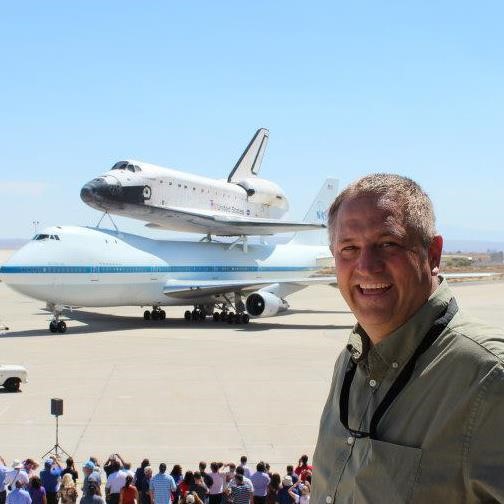
Current projects include the X-59 Quiet SuperSonic Technology, which is investigating ways to make supersonic travel over land quieter and more tolerable for people on the ground under the flight path. The technology could enable quicker air travel across the country. Teams at Armstrong are also working on how to integrate unmanned aerial systems into national airspace.
The work does not end there. The unique testing capabilities enable Armstrong’s team to collaborate with engineers and technologists across NASA and industry to advance their technologies through Technologies Readiness Levels 3-6 – often called “the valley of death” in technology development. Citing multiple test platforms and programs, Voracek encouraged Marshall team members interested in flying their technology to reach out to him or Marshall’s chief technologist, Dr. John Dankanich.
“Don’t hesitate to try to get your technology into flight,” Voracek said.
The Tech Talk series is presented by Marshall’s Chief Technologist’s Office.
This Week in NASA History: SA-4 Launches – March 28, 1963
This week in 1963, the Saturn I SA-4 rocket launched from NASA’s Kennedy Space Center. The uncrewed suborbital test flight was the final of four tests of the Saturn I first, or S-I, stage that employed a cluster of eight H-1 engines. After 100 seconds into flight, a preset timer cut off engine number 5 as planned to test the “engine out” capability. Fuel was successfully routed to the other seven engines and the flight continued. Managed by NASA’s Marshall Space Flight Center, the Saturn I vehicle and its follow-on, the Saturn IB, served as test bed rockets for the larger and more powerful Saturn V that would eventually carry the first humans to the Moon. Today, Marshall is playing a vital role in the Artemis program by developing the Space Launch System, the backbone of NASA’s exploration plans and the only rocket capable of sending humans to the Moon and Mars. The NASA History Program is responsible for generating, disseminating, and preserving NASA’s remarkable history and providing a comprehensive understanding of the institutional, cultural, social, political, economic, technological, and scientific aspects of NASA’s activities in aeronautics and space. For more pictures like this one and to connect to NASA’s history, visit the Marshall History Program’s webpage. (NASA)


























